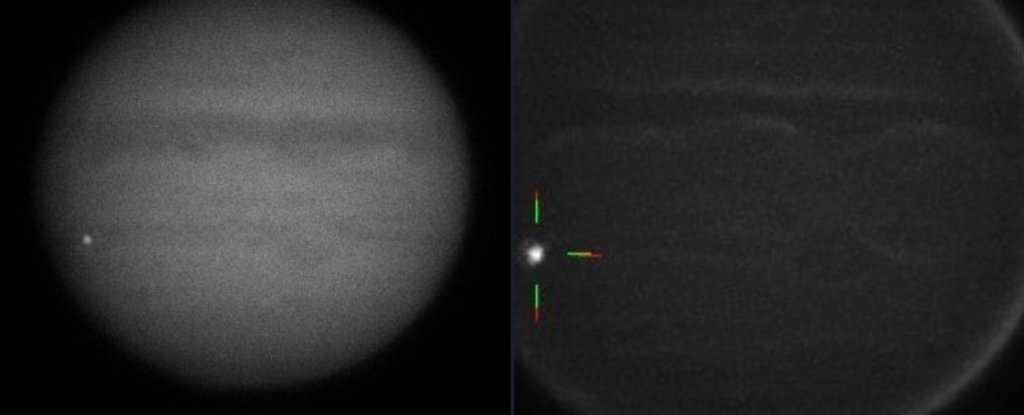
An amateur astronomer living in Texas, USA, reportedly captured a rare video of a meteorite crashing into the atmosphere of Jupiter.
On August 7 (local time), amateur astronomer Ethan Chappel was looking at an astronomical telescope to observe the Perseus meteor shower. However, while recording for a while with the telescope facing Jupiter, a flash detection warning came out when video data was input into the automatic analysis software. He checked the video again and was able to see a glare in an instant from the east near the equator south of Jupiter.
Realizing that he had made a big discovery, he tweeted that he noticed a flash of light when a meteorite collided while shooting Jupiter.
Two views of #Jupiter early on 7 August 2019 with the flash I recorded. Left shows the moment of impact at 4:07 UTC. Right is an RGB image. pic.twitter.com/xPmS8MMFhc
— Chappel Astro (@ChappelAstro) August 8, 2019
https://platform.twitter.com/widgets.js
Astronomer Bob King, who saw this, published it on Sky & Telescope, an astronomy site. According to this, the observation of the flash lasted only a second and a half, even if it was long from 4:7. It also revealed that there are several features that can be concluded that the identity of this flash was not caused by Jupiter lightning and aurora, but almost by meteorite impact. From the observations of Jupiter so far, it is believed that the appearance of a small dot swelling and then fading is due to a collision. In addition, the video alone does not appear to be a massive collision, but considering the massive size of Jupiter, the largest planet in the solar system, this meteorite appears to be quite large.
Another impact on Jupiter today (2019-08-07 at 04:07 UTC)! A bolide (meteor) and not likely to leave dark debris like SL9 did 25 years ago. Congrats to Ethan Chappel ( @ChappelAstro ) on this discovery and H/T to Damian Peach ( @peachastro ) for the report https://t.co/lj38ncBZuI
— Dr Heidi B. Hammel (@hbhammel) August 7, 2019
https://platform.twitter.com/widgets.js
Astronomer Heidi Hammel observed a historical event with the Hubble Space Telescope, 25 years ago, on July 21, 1994, when Comet Shoemaker Levy 9 collided with Jupiter one after another as it shattered. When the fragments hit Jupiter at the time, dark traces were left. Comet Shoemaker Levy left a scar on Jupiter’s atmosphere after the collision, but why did there not remain fragments in this collision? In 2010, we could see a flash of the same magnitude from Jupiter. At that time, observations were made through NASA’s Hubble Space Telescope or the European Southern Observatory’s VLT, but no trace of the collision was confirmed at that time. As a result of analyzing the observation data in 2010, it is possible to predict a large amount of impact when a meteorite collides with Jupiter, but at this scale, there seems to be no evidence of collision.
The meteorite that hit Jupiter in 2010 is 8-13m in diameter, and when converted to TNT, it is estimated that it had the destructive power of 66 Little Boy atomic bombs. When the Earth is hit by such a shock, it will be upset, but Jupiter has not even been hurt.
For reference, since Comet Shoemaker Levy hit Jupiter in 1994, it is said that there have been seven collisions with Jupiter. Because Jupiter’s powerful gravity attracts the meteorite, it can fall 2,000 to 8,000 times that of Earth. However, most say the meteorite impact is too small to be observed from Earth. It is said that this flash appears to be the same scale as the 2010 crash. Related information can be found here .


















Add comment